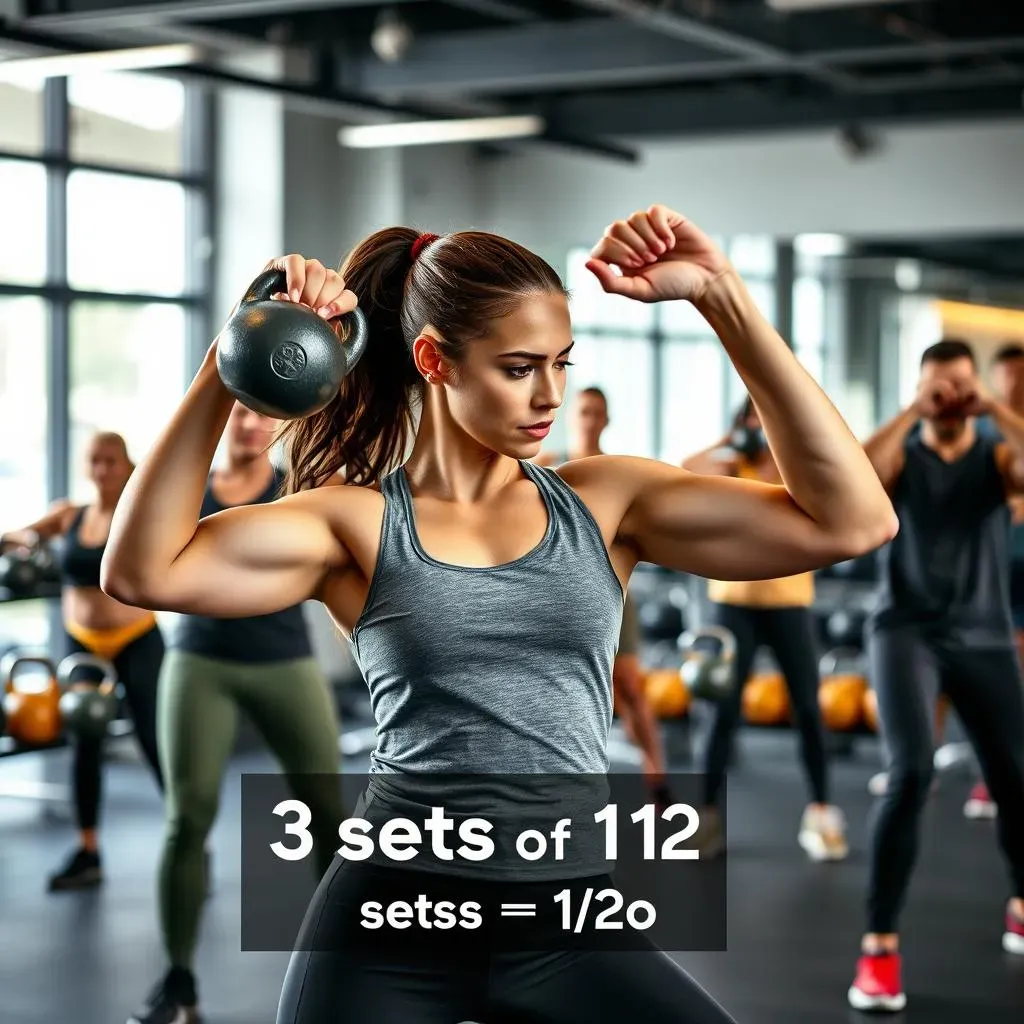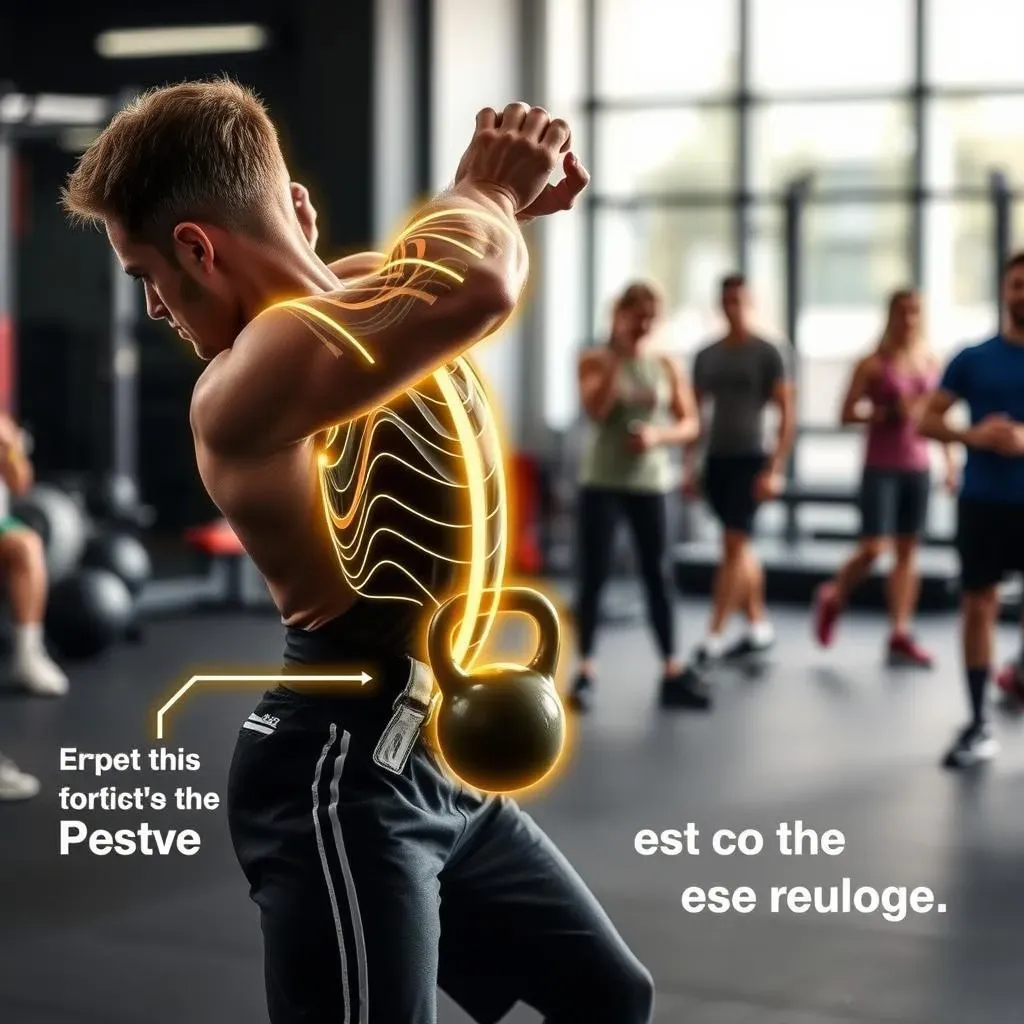Table of Contents
Ready to torch calories, build serious muscle, and skyrocket your fitness levels? You don't need a fancy gym or a ton of equipment. All you need is one trusty kettlebell. This single kettlebell full body workout guide is your ticket to a stronger, leaner, and more powerful you. We'll dive into why the kettlebell is such an effective tool for full-body training, then walk you through a killer routine packed with exercises that target every major muscle group.
Why Choose a Single Kettlebell for a Full Body Workout?

Why Choose a Single Kettlebell for a Full Body Workout?
Efficiency and Simplicity
Let's be real, who has hours to spend at the gym these days? The beauty of a single kettlebell full body workout lies in its efficiency. You're hitting multiple muscle groups with compound movements, maximizing calorie burn and muscle activation in a shorter amount of time. Plus, you only need one piece of equipment! No more hopping between machines or waiting for someone to finish their set. It's simplicity at its finest, perfect for busy schedules and home workouts.
Think about it: a single kettlebell can replace a whole rack of dumbbells. It's space-saving, cost-effective, and incredibly versatile. You can take it anywhere – the park, your backyard, even on vacation. No excuses! This is about making fitness accessible and sustainable, not complicated and overwhelming.
Functional Strength and Real-World Benefits
Forget isolating muscles with bicep curls. Kettlebell exercises mimic real-life movements, building functional strength that translates to everyday activities. Lifting groceries, carrying kids, or even just getting up from a chair – a single kettlebell full body workout prepares you for the demands of life.
Because kettlebell movements often involve swinging and dynamic motion, they improve your core stability, balance, and coordination. You're not just building muscle; you're enhancing your overall athleticism and movement quality. That's something you can feel in every aspect of your life.
Benefits of Functional Strength
- Improved posture
- Reduced risk of injury
- Increased power and explosiveness
- Enhanced athletic performance
- Better balance and coordination
The Ultimate Single Kettlebell Full Body Workout: Exercises & Form

The Ultimate Single Kettlebell Full Body Workout: Exercises & Form
Goblet Squat: Your Foundation
The goblet squat is your cornerstone. Holding the kettlebell close to your chest, squat down as low as you can while maintaining good form. Think about pushing your knees out and keeping your back straight. This exercise torches your quads, glutes, and core, setting the stage for everything else.
I like to tell people to imagine they're sitting back into a chair. This helps maintain balance and ensures you're engaging the right muscles. Don't let your knees cave in! That's a recipe for injury. Keep those knees tracking over your toes.
Goblet Squat Form Checklist:
- Kettlebell held close to chest
- Back straight, chest up
- Knees tracking over toes
- Squat as low as possible with good form
Kettlebell Swings: Power Up
Now, let's talk swings. The kettlebell swing is a powerhouse move that works your posterior chain – glutes, hamstrings, and back. It's all about generating power from your hips, not your arms. Think of it as a hip hinge, not a squat.
Start with the kettlebell on the ground in front of you. Hinge at your hips, grab the kettlebell, and hike it back between your legs. Then, explosively drive your hips forward, swinging the kettlebell up to chest height. Squeeze your glutes at the top of the swing. Control the kettlebell on the way back down, repeating the movement.
Overhead Press: Shoulder Strength
Time to build those shoulders! The overhead press targets your deltoids, triceps, and upper back. It also challenges your core stability, as you need to maintain a solid base while pressing the weight overhead.
Clean the kettlebell to the racked position (resting on your forearm). From there, press the kettlebell straight overhead, locking out your elbow at the top. Lower the kettlebell back to the racked position and repeat. Remember to keep your core engaged and your wrist straight to avoid injury.
Start with a lighter weight and focus on perfect form. It's better to do fewer reps with good technique than to struggle with a heavy weight and risk hurting yourself.
Exercise | Muscle Groups Targeted | Key Form Points |
|---|---|---|
Goblet Squat | Quads, Glutes, Core | Chest up, knees tracking over toes |
Kettlebell Swing | Glutes, Hamstrings, Back | Hip hinge, explosive power |
Overhead Press | Shoulders, Triceps, Core | Stable base, straight wrist |
Building Your Single Kettlebell Workout Plan: Sets, Reps, & Progression

Building Your Single Kettlebell Workout Plan: Sets, Reps, & Progression
Finding Your Starting Point
Alright, so you've got the exercises down. Now, let's talk about how to actually structure your single kettlebell full body workout plan. The first step is figuring out where you're starting from. Be honest with yourself! Are you a complete beginner, or do you have some experience with strength training? This will dictate the weight you choose and the number of reps and sets you perform.
If you're new to kettlebells, start light. Seriously. It's better to master the form with a lighter weight than to struggle with something too heavy and risk injury. A good rule of thumb is to choose a weight that you can comfortably press overhead for 8-12 reps.
Sets, Reps, and Rest: The Magic Numbers
let's get into the nitty-gritty. When it comes to sets and reps, there's no one-size-fits-all answer. However, a good starting point for a single kettlebell full body workout is 3 sets of 8-12 reps for each exercise. This rep range is ideal for building both strength and muscle.
Rest is just as important as the exercises themselves. Aim for 60-90 seconds of rest between sets. This will allow your muscles to recover slightly so you can maintain good form throughout the workout. As you get stronger, you can gradually decrease the rest time to increase the intensity.
Progressive Overload: Keep Challenging Yourself
The key to long-term progress is progressive overload. This means gradually increasing the demands on your body over time. There are several ways to do this with a single kettlebell full body workout. You can increase the weight, increase the number of reps, decrease the rest time, or add more challenging variations of the exercises.
Don't try to do too much too soon. Small, gradual increases are more sustainable and less likely to lead to injury. Listen to your body and adjust your plan accordingly. If you're feeling pain, stop and rest.
For example, if you're comfortably performing 3 sets of 12 reps with a certain weight, try increasing the weight by a small amount. Or, if you're short on time, try decreasing the rest time between sets. The possibilities are endless!
Progression Method | Description | Example |
|---|---|---|
Increase Weight | Use a heavier kettlebell. | Go from a 12kg to a 16kg kettlebell. |
Increase Reps | Perform more repetitions per set. | Go from 8 reps to 12 reps per set. |
Decrease Rest | Reduce the rest time between sets. | Go from 90 seconds rest to 60 seconds rest. |
Add Variations | Try more challenging versions of the exercises. | Switch from a regular squat to a pistol squat. |
Kettlebell Full Body Workout Benefits: More Than Just Strength

Kettlebell Full Body Workout Benefits: More Than Just Strength
Beyond the Biceps: Holistic Muscle Development
so you're swinging and squatting, but what's really happening inside your body? A kettlebell full body workout isn't just about building bulging biceps or a sculpted six-pack (although it can certainly help with that!). It's about developing holistic muscle strength. Because many kettlebell exercises are compound movements, they engage multiple muscle groups simultaneously. This leads to more balanced and functional strength gains compared to isolation exercises.
Think about the kettlebell swing again. It's not just your glutes and hamstrings working; your core is firing to stabilize you, your shoulders are engaged to control the weight, and even your grip is getting a workout. It's a symphony of muscle activation! And that translates to real-world strength that you can use in everyday life.
Cardio Without the Treadmill: Elevating Your Heart Rate
Hate the treadmill? I get it. A kettlebell full body workout can be a fantastic alternative for getting your cardio in. The dynamic movements and constant muscle engagement elevate your heart rate, providing a cardiovascular challenge similar to running or cycling.
But here's the kicker: you're not just burning calories; you're also building muscle at the same time. That's a win-win! High-intensity kettlebell circuits can be incredibly effective for improving your cardiovascular fitness and boosting your metabolism. Plus, it's way more fun than staring at a screen for an hour.
Mind-Body Connection: Improving Coordination and Focus
A kettlebell full body workout isn't just about physical strength; it's also about mental focus. The dynamic movements require coordination and concentration, helping you to improve your mind-body connection. You have to be present and aware of your body's movements to perform the exercises safely and effectively.
This increased awareness can translate to other areas of your life, improving your posture, balance, and overall movement quality. It's like a moving meditation, helping you to clear your mind and focus on the present moment. So, ditch the distractions and get ready to connect with your body and mind!
Benefit | Description | Example |
|---|---|---|
Holistic Muscle Development | Engages multiple muscle groups simultaneously. | Kettlebell swing works glutes, hamstrings, core, and shoulders. |
Cardiovascular Fitness | Elevates heart rate and burns calories. | High-intensity kettlebell circuits improve cardio health. |
Mind-Body Connection | Improves coordination, focus, and body awareness. | Requires concentration and precise movements. |
Kettlebell Safety & Injury Prevention for Your Full Body Routine

Kettlebell Safety & Injury Prevention for Your Full Body Routine
Prioritize Proper Form: The Foundation of Safety
Alright, let's get serious. You can't just start swinging a kettlebell around like a maniac and expect to stay injury-free. Proper form is non-negotiable. It's the bedrock of kettlebell safety and the key to getting the most out of your full body routine. Before you even think about increasing the weight or adding reps, nail down the correct technique for each exercise.
That means watching videos, reading articles (like this one!), and even working with a qualified trainer to get personalized feedback. Don't be afraid to start slow and practice the movements without any weight at all. It's an investment in your long-term health and fitness. Trust me, your body will thank you.
Warm-Up Like You Mean It: Prepare Your Body for Action
Think of your warm-up as a pre-flight check for your body. You wouldn't take off in a plane without making sure everything is in working order, right? Same goes for your kettlebell full body workout. A proper warm-up prepares your muscles and joints for the demands of the exercises, reducing your risk of strains, sprains, and other injuries.
Focus on dynamic movements that mimic the exercises you'll be performing in your workout. Think arm circles, leg swings, torso twists, and bodyweight squats. Get your heart rate up, your blood flowing, and your muscles primed for action. A good warm-up should leave you feeling energized and ready to go, not tired and depleted.
Listen to Your Body: Know Your Limits and Respect Pain
This is perhaps the most important piece of advice I can give you: listen to your body! It's constantly communicating with you, telling you what it needs and what it can handle. Don't ignore those signals. If you're feeling pain, stop! Don't push through it. Pain is your body's way of saying something is wrong.
It's okay to push yourself, but there's a difference between pushing your limits and ignoring your body's warning signs. Learn to differentiate between muscle soreness and actual pain. Muscle soreness is normal after a challenging workout, but pain is a sign of potential injury. Respect your body's limits, and don't be afraid to modify the exercises or take a rest day when needed.
Also, make sure you cool down and stretch after your workout. This will help your muscles recover and reduce soreness.
Safety Tip | Description | Why It Matters |
|---|---|---|
Prioritize Proper Form | Focus on correct technique for each exercise. | Reduces risk of injury and maximizes effectiveness. |
Warm-Up Thoroughly | Prepare your muscles and joints for the workout. | Prevents strains, sprains, and other injuries. |
Listen to Your Body | Pay attention to pain signals and respect your limits. | Avoids pushing through injuries and promotes recovery. |
Conclusion: Your Journey to Full-Body Fitness Starts Now
The power of a single kettlebell full body workout lies in its simplicity and effectiveness. By mastering the exercises, understanding proper form, and progressively challenging yourself, you can achieve remarkable results in strength, endurance, and overall fitness. This isn't just about exercise; it's about building a sustainable routine that fits your life and empowers you to reach your goals. So, grab that kettlebell, embrace the challenge, and start sculpting the body you've always wanted. Your journey to a stronger, healthier you begins today.